Wren - Royal Architect
|
-
About this Collection
Sir Christopher Wren (1632-1723) is regarded as the most influential British architect in history.
At Oxford University, he had studied the sciences, and was an eminent astronomer by his mid-twenties. Through family connections, he began his architectural career by designing buildings for Cambridge and Oxford.
After the Great Fire of London in 1666 destroyed much of the city, King Charles II appointed Wren to a commission charged with rebuilding the city. In the next 46 years he designed and supervised the rebuilding of over 50 churches, including his masterpiece and one of London's most beloved landmarks, St. Paul's Cathedral.
Wren's style is a restrained version of the Baroque, using standard classical forms of columns, pediments, and domes. By elaborating these forms he created a more dynamic and dramatic appearance, though not to the bold extent of the Italian or German Baroque architects. His inventiveness is exemplified by his signature 'wedding cake' steeples, a feature created by stacking various classical elements to form a spire
Wren’s grandson published his essays in Parentalia. In this work Wren wrote that his primary tenet was the importance of geometry in creating beauty. As a scientist, he believed that the regularity of geometrical figures derived from the orderliness of nature.
Wren's pupils and colleagues carried on and elaborated his design concepts into the early years of the 18th century. Architects such as John Vanbrugh abandoned much of Wren's basic simple elegance to design grandiose and imposing palaces for the aristocracy.
-
Engraved portrait of Sir Christopher Wren from his grandson's book Parentalia, 1750
Sir Christopher Wren (1632-1723) is regarded as the most influential British architect in history. At Oxford University, he had studied the sciences, and was an eminent astronomer by his mid-twenties. Through family connections, he began his architectural career by designing buildings for Cambridge and Oxford. After the Great Fire of London in 1666 destroyed much of the city, he was appointed by King Charles II to a commission charged with rebuilding the city. In the next 46 years he designed and supervised the rebuilding of over 50 churches, including his masterpiece and one of London's most beloved landmarks, St. Paul's Cathedral. In 1669 he became Surveyor General of the King's Works, thus supervising architectural work on all royal palaces.
Wren's style is a restrained version of the Baroque, using standard classical forms of columns, pediments, and domes. By elaborating these forms he created a more dynamic and dramatic appearance, though not to the bold extent of the Italian or German Baroque architects. His inventiveness is exemplified by his signature 'wedding cake' steeples, a feature that is created by stacking various classical elements to form a spire.
He did not publish his own theories, but in his essays that were published by his grandson in Parentalia (1750), he wrote that his primary tenet was the importance of geometry in creating beauty. As a scientist, he believed that the regularity of geometrical figures derived from the orderliness of nature.
His pupils and colleagues carried on and elaborated his design concepts into the early years of the 18th century. Architects such as John Vanbrugh abandoned much of Wren's basic simple elegance to design grandiose and imposing palaces for the aristocracy.
-
Detail and sections of the clock tower of St. Paul's Cathedral, London
Detail and sections of the clock tower of St. Paul's Cathedral in London, Sir Christopher Wren's masterpiece.
Lithograph in Arthur F. E. Poley's St. Paul's Cathedral London Measured, Drawn Described, a handsome folio published in 1927.
-
First page of the biography of Sir Christopher Wren from Parentalia
-
Frontispiece of Wren's Parentalia picturing Christopher Wren, Jr.
-
St. Paul's Cathedral in London as pictured in Wren's Parentalia
An engraving of London's landmark St. Paul's Cathedral, designed by Sir Chrisopher Wren and approved by King Charles II in 1675.
This illustration appears in the book Parentalia, published in 1750 by Wren's grandson.
-
Title page of Wren's Parentalia
Sir Christopher Wren (1632-1723) did not publish his own theories, but in his essays that were published by his grandson in Parentalia, he wrote that his primary tenet was the importance of geometry in creating beauty. As a scientist, he believed that the regularity of geometrical figures derived from the orderliness of nature.
The title page of Parentalia indicates clearly that this is a book about notable members of the Wren family, not only Sir Christopher the architect. The architect's eldest son, also named Christopher, had compiled much of the information from various sources, and it was finally brought to publication in 1750 by his grandson Stephen, 27 years after Sir Christopher's death.
-
Wren's tomb inscription
Sir Christopher Wren died in 1723 and is buried in the crypt of his masterpiece, St. Paul's Cathedral. The Latin inscription on his tomb has become famous: Lector, Si Monumentum requiris, Circumspice ('Reader, if you seek his monument, look around you').
This is a page from Parentalia, a book about the Wren family published in 1750 by Sir Christopher's grandson.
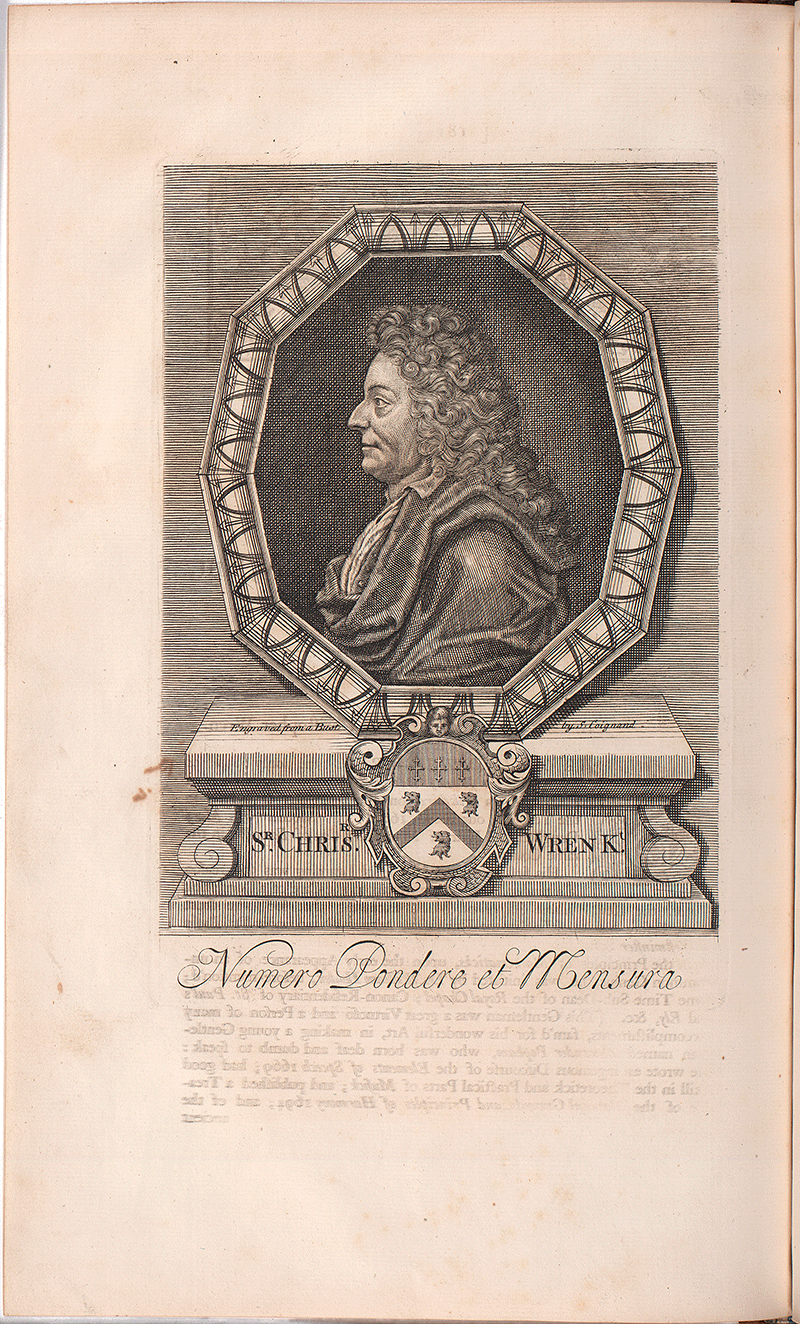 View Image
View Image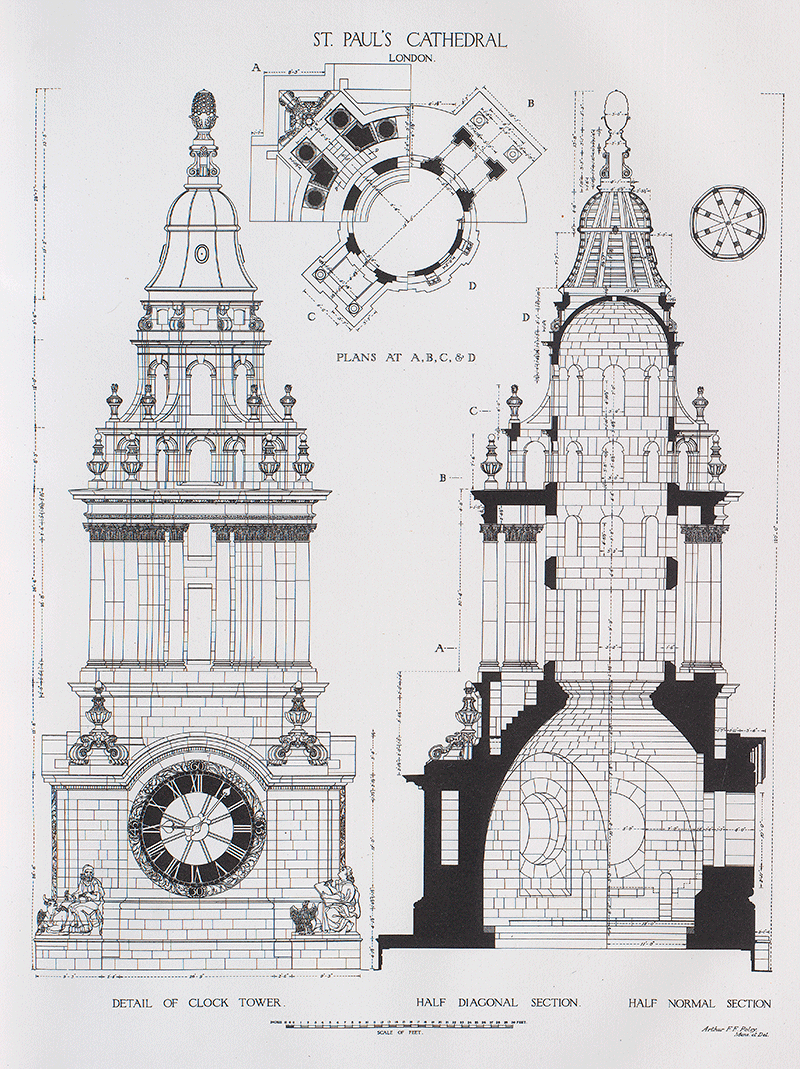 View Image
View Image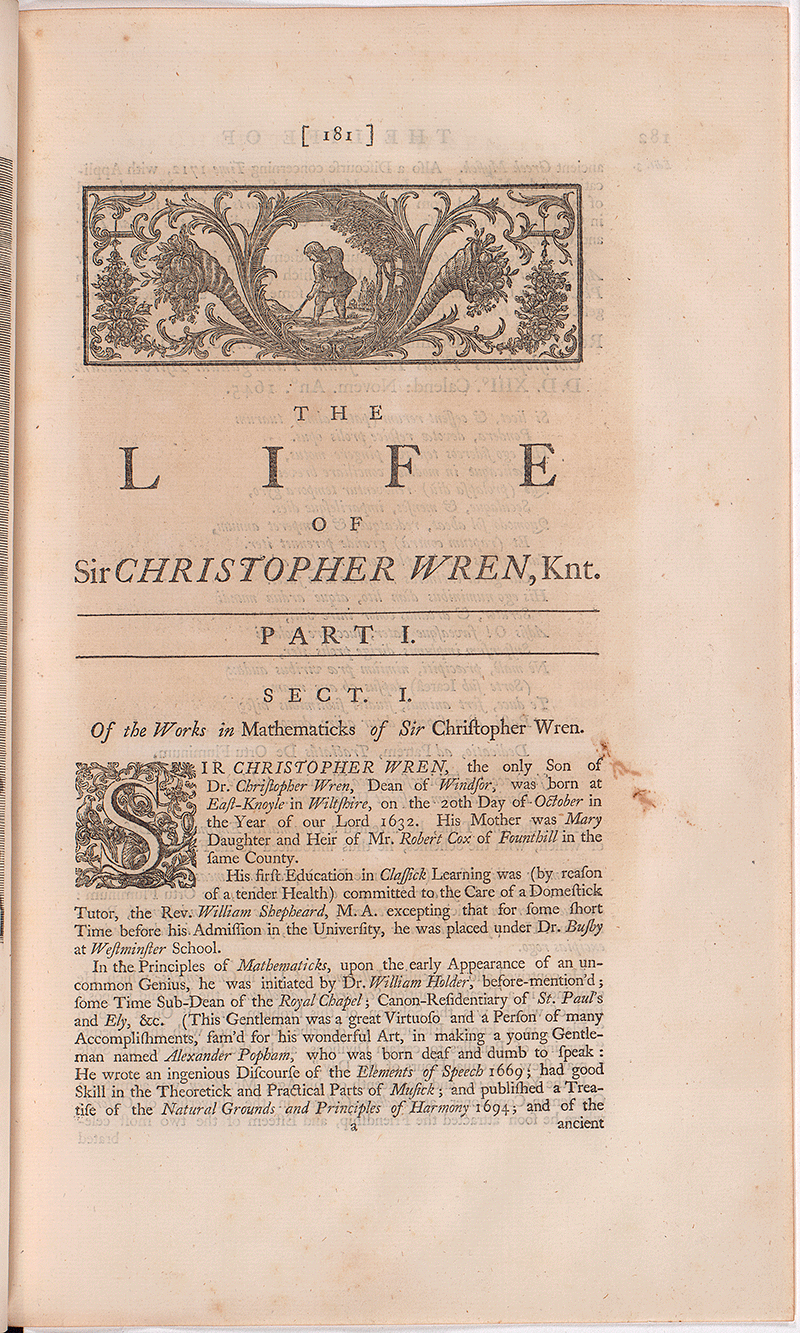 View Image
View Image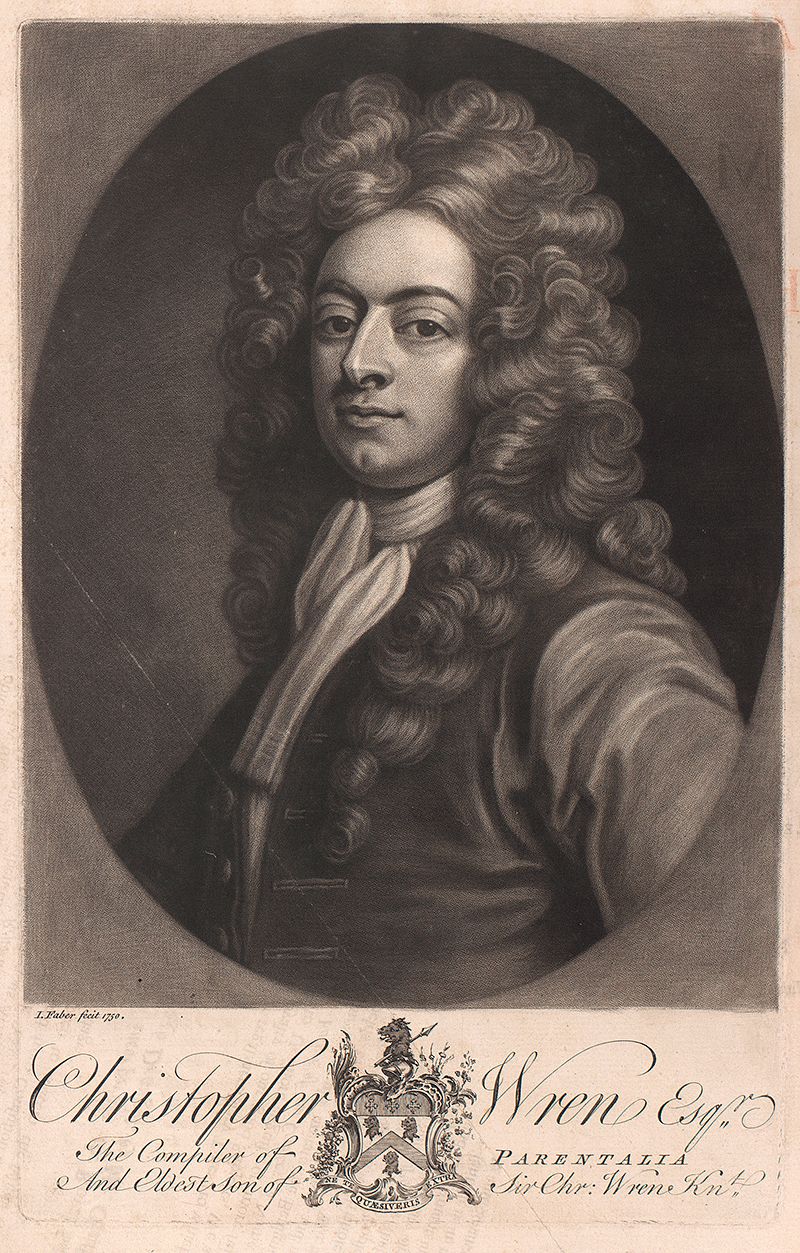 View Image
View Image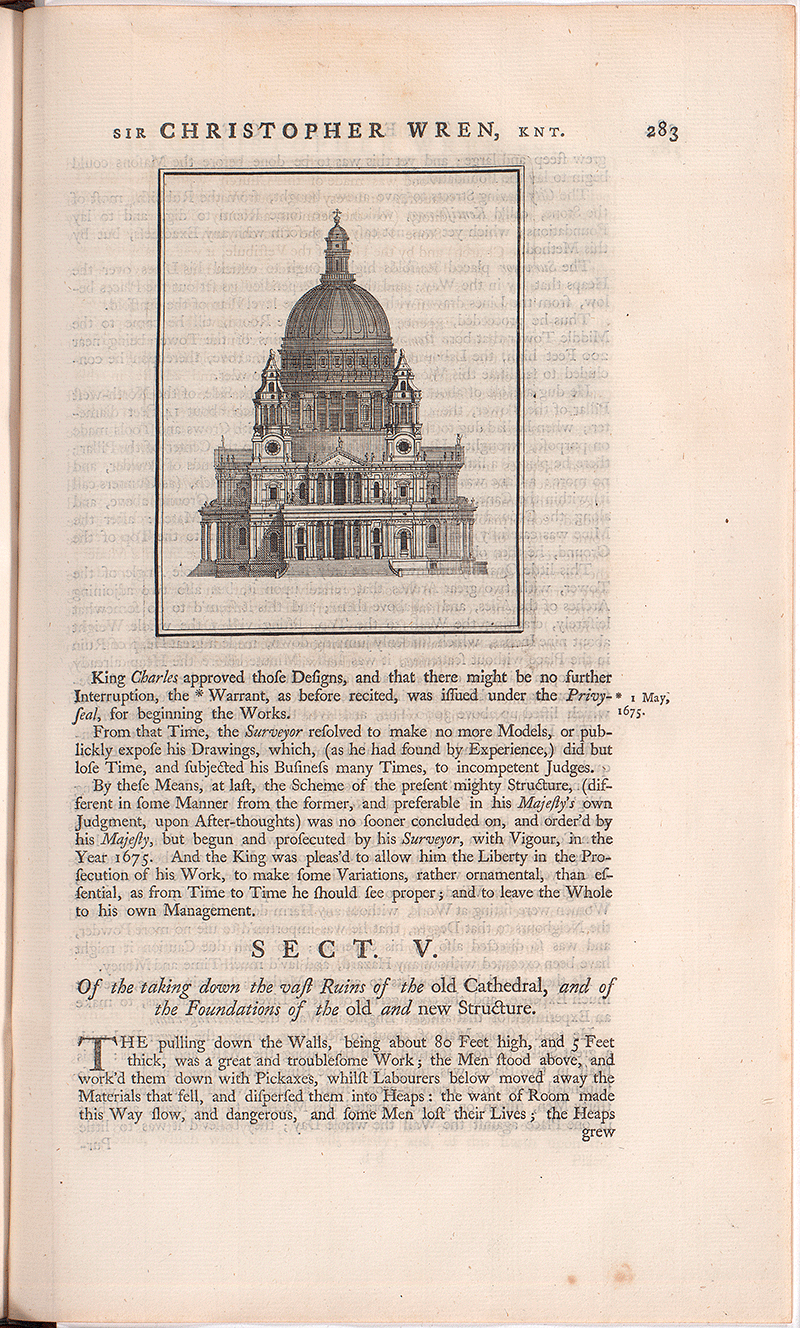 View Image
View Image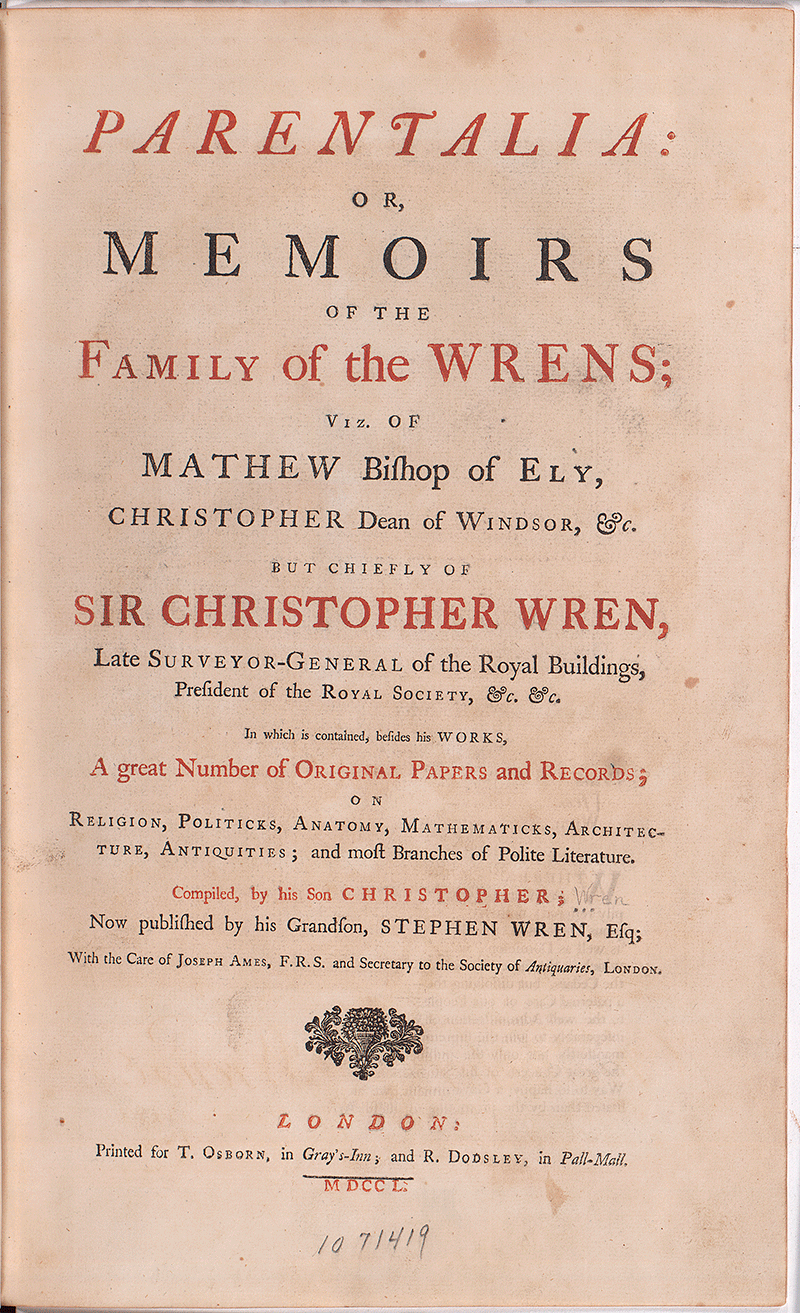 View Image
View Image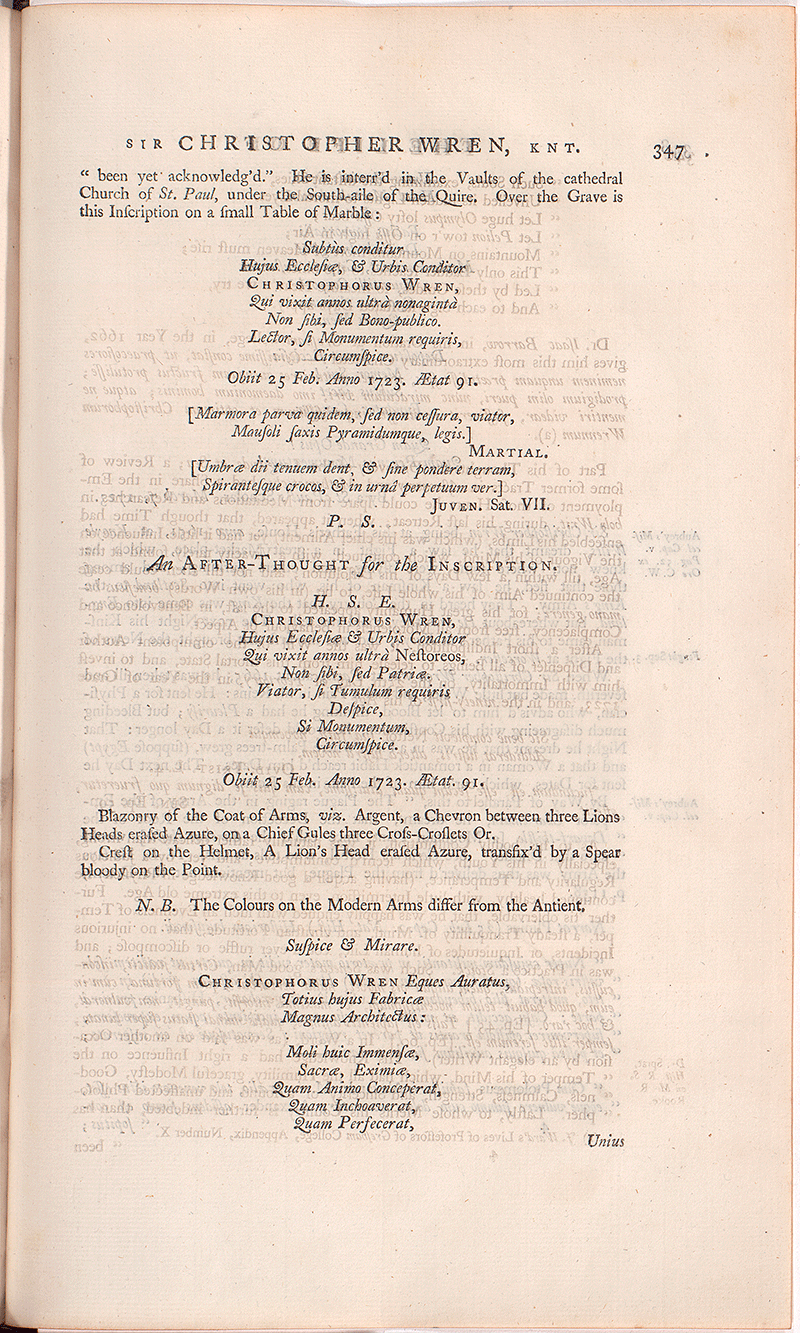 View Image
View Image